PARTICIPATING ARTISTS
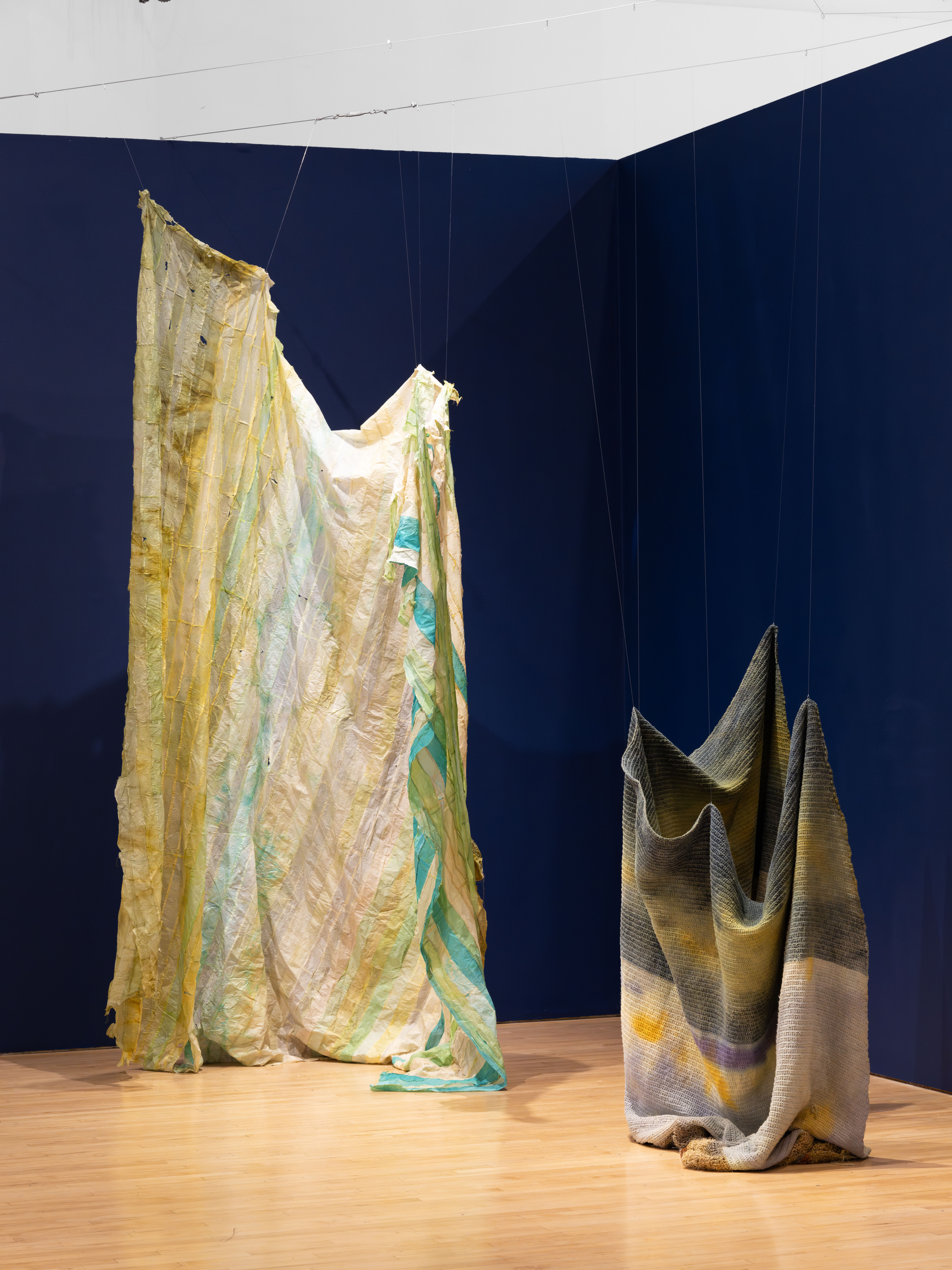
Charmaine Bee
Uma voz do mangue series, 2024
Tea bag filters, thread, dye, indigo, sound
Courtesy of the artist
Charmaine Bee (they/them) is inspired by traditional
healing practices of their Gullah ancestors, a vast
archive of Black herbal healing practices, and messages
in dreams. This installation uses textiles and sound
to recall the landscape and dreamscape around their
grandmother’s South Carolina home, evoking a restful,
alive, and ancient marshland.
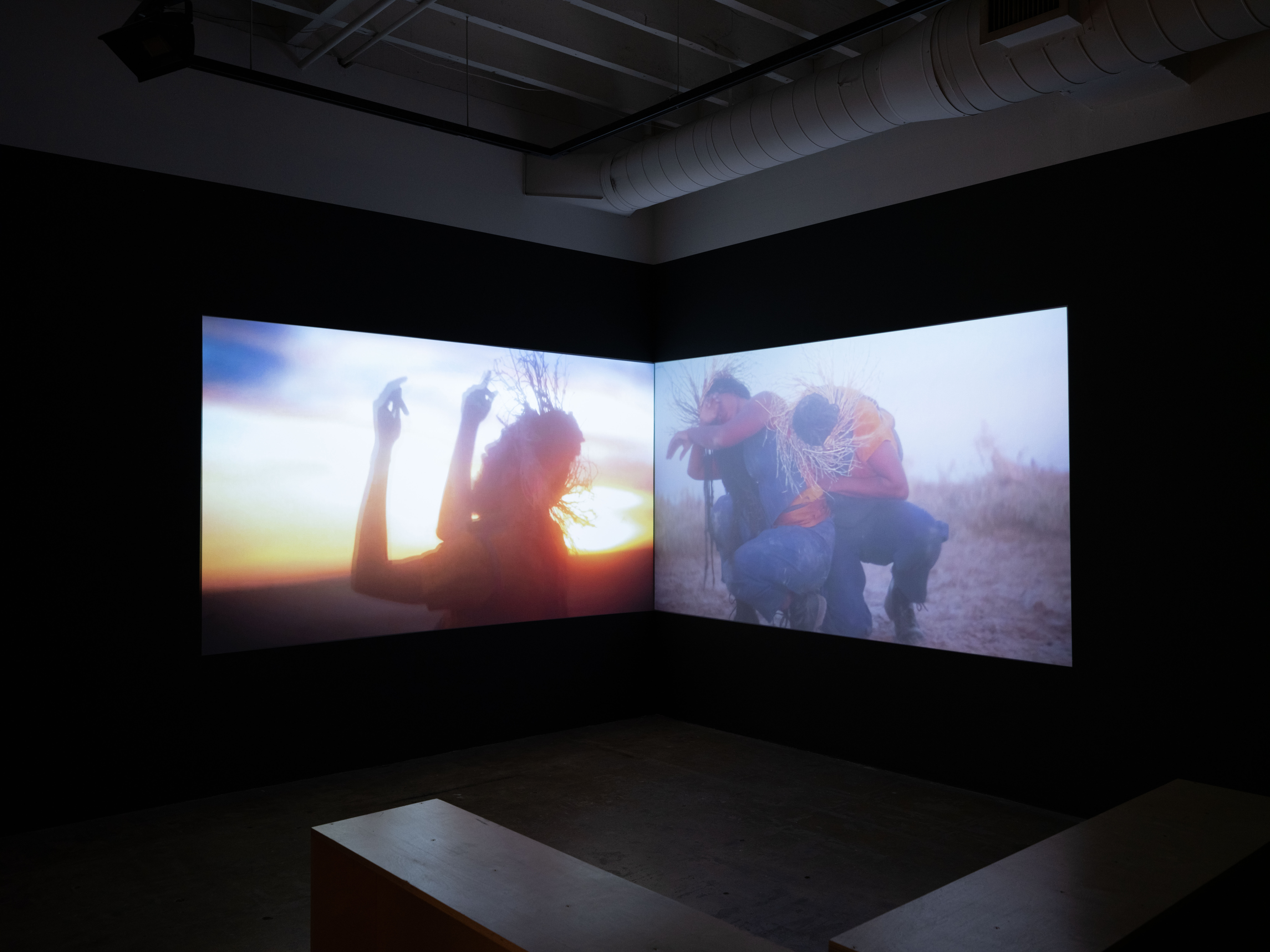
Nikesha Breeze
Stages of Tectonic Blackness: Blackdom, 2021
Dual-channel video with sound
29:00 min.
Documentation of a collaborative performance by
Miles Tokunow, Nikesha Breeze, Lazarus Nance Letcher
Cinematographer: MK
Courtesy of the artist
Nikesha Breeze (they/them) is a direct descendant of
Blackdom, a homesteading community founded by
thirteen African Americans near Roswell, New Mexico
in 1903 that existed until about 1930. This video portrays
a site-specific, collaborative dance ritual that honors the
landscape and grieves the transgressions against Black
and Indigenous communities at Blackdom.
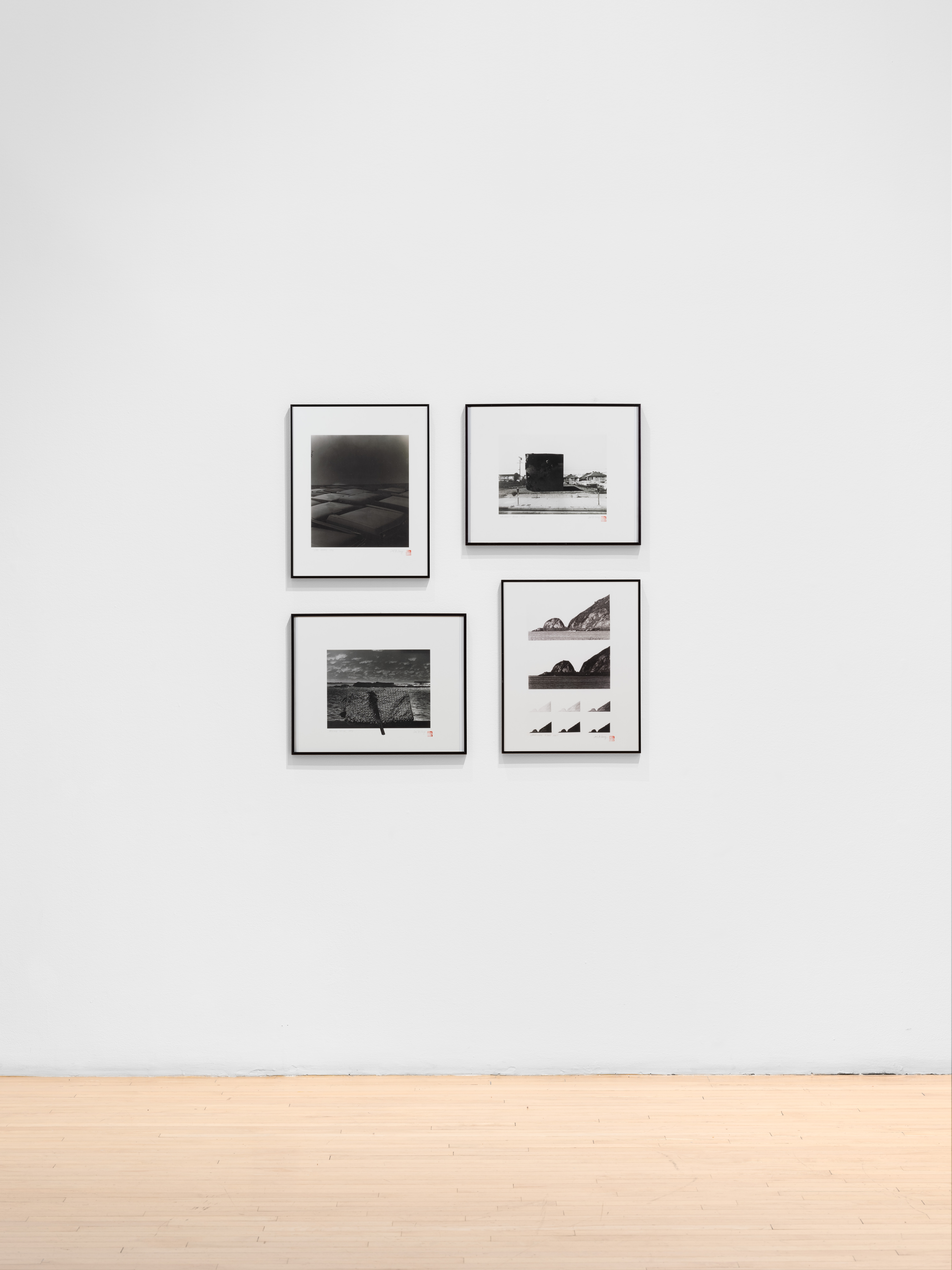
Carl Cheng
(Clockwise from top left)
Car Hoods, 1976
Archival pigment print
Uncarved Block, 1976
Archival pigment print
Landscape Essay, 1967
Archival pigment print
Mixing Stick, 1974
Archival pigment print
All works courtesy of the artist and Philip Martin Gallery,
Los Angeles
Carl Cheng (he/him) uses found objects, discarded
technology, and industrial processes to question the
relationships between artwork and everyday objects.
Cheng’s work invites viewers to reflect on the balance
between technological advancement and environmental
stewardship, the divisions between technology and
nature, and the often-arbitrary boundaries we place
between art, utility, and waste.
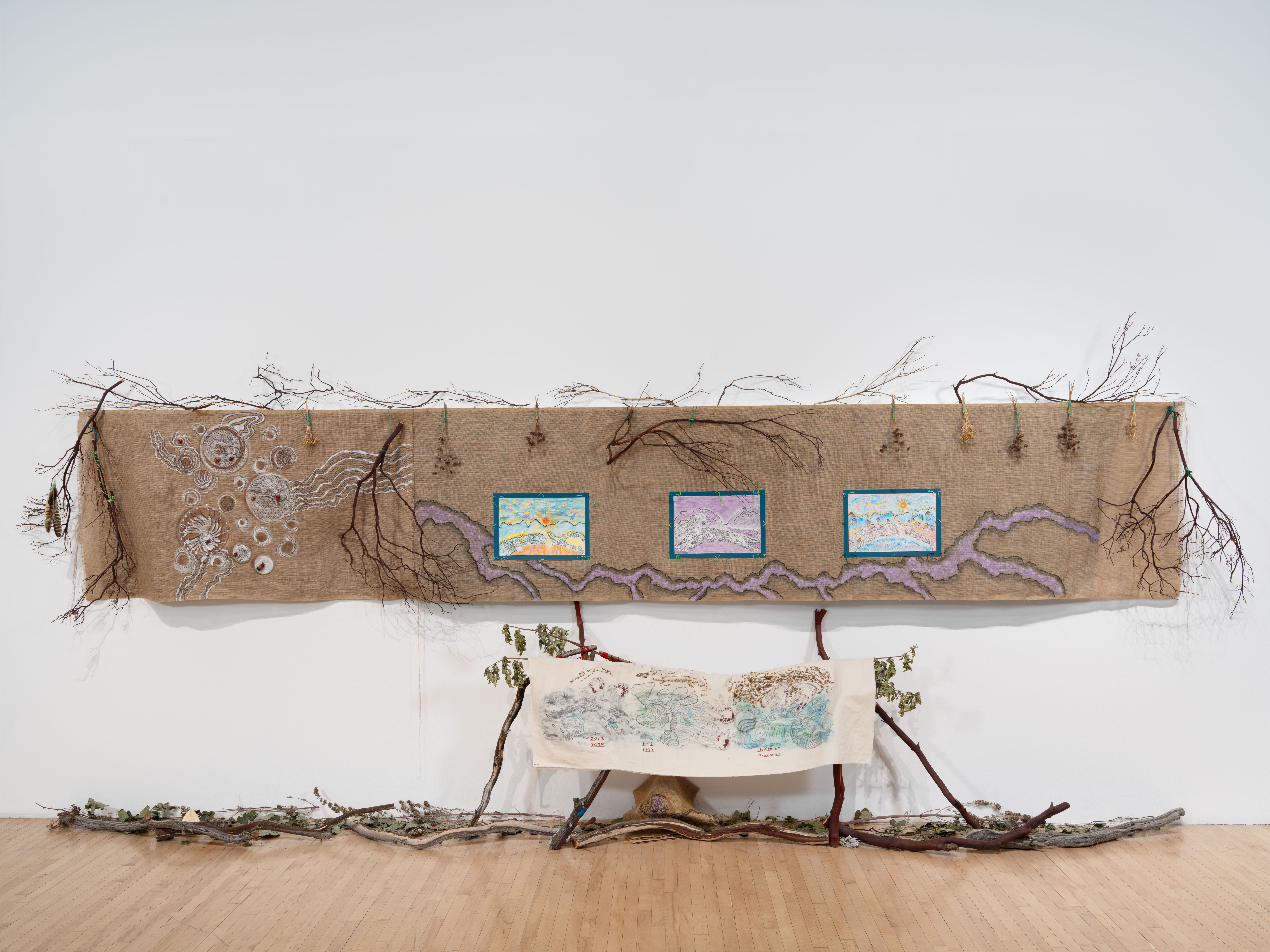
Olivia Chumacero
Dispersing Time, 2024
Plant pigments, ink, organic acrylic, burlap, muslin,
manzanita branches, feathers, Cahuilla acorn harvest song
Courtesy of the artist
Indigenous cosmology recognizes trees as human
relatives. Olivia Chumacero (Rarámuri, she/her) offers
a portrait of an oak downed by wind and rain, yet alive
with a lush canopy and deep roots. She compares the
tree’s resilience to that of Indigenous peoples, whose
lines of existence have been disrupted yet not destroyed.
Following this exhibition, the piece — which is an offering
to seeds — will be buried in the Sequoyah National Forest.
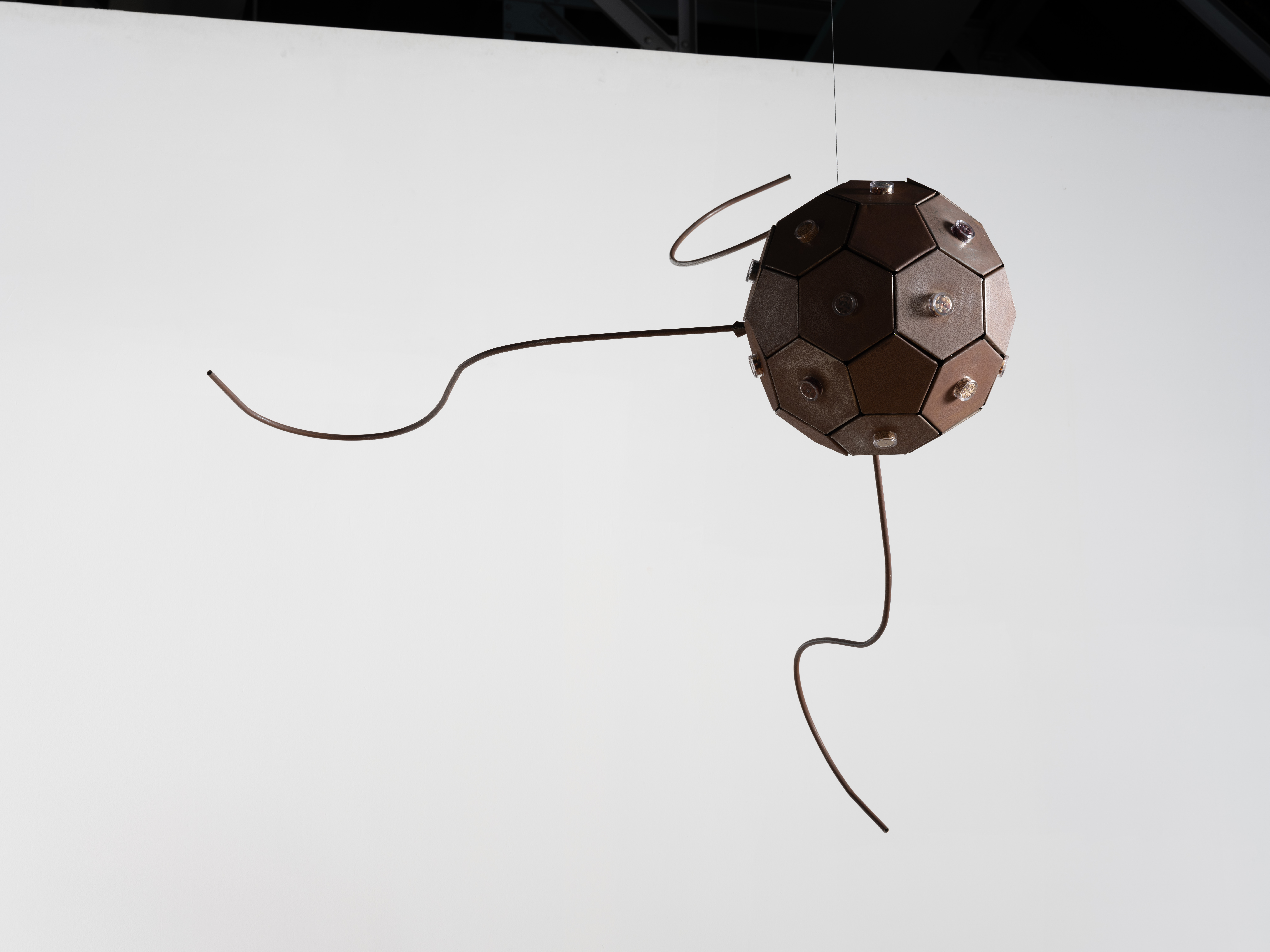
Beatriz Cortez
Generosity I, 2019
Steel, plastic, seeds (corn, beans, amaranth, quinoa,
sorghum, gourd)
Courtesy of the artist and Commonwealth and Council,
Los Angeles and Mexico City
Generosity I contains seeds of Indigenous non-GMO corn,
beans, amaranth, quinoa, sorghum, and gourd—plants
of Mesoamerican daily life. Its shape evokes the Russian
satellite Sputnik, the first space probe launched into
Earth’s orbit. Beatriz Cortez (she/her) extends life into the
future by offering seeds to imagined others beyond Earth.
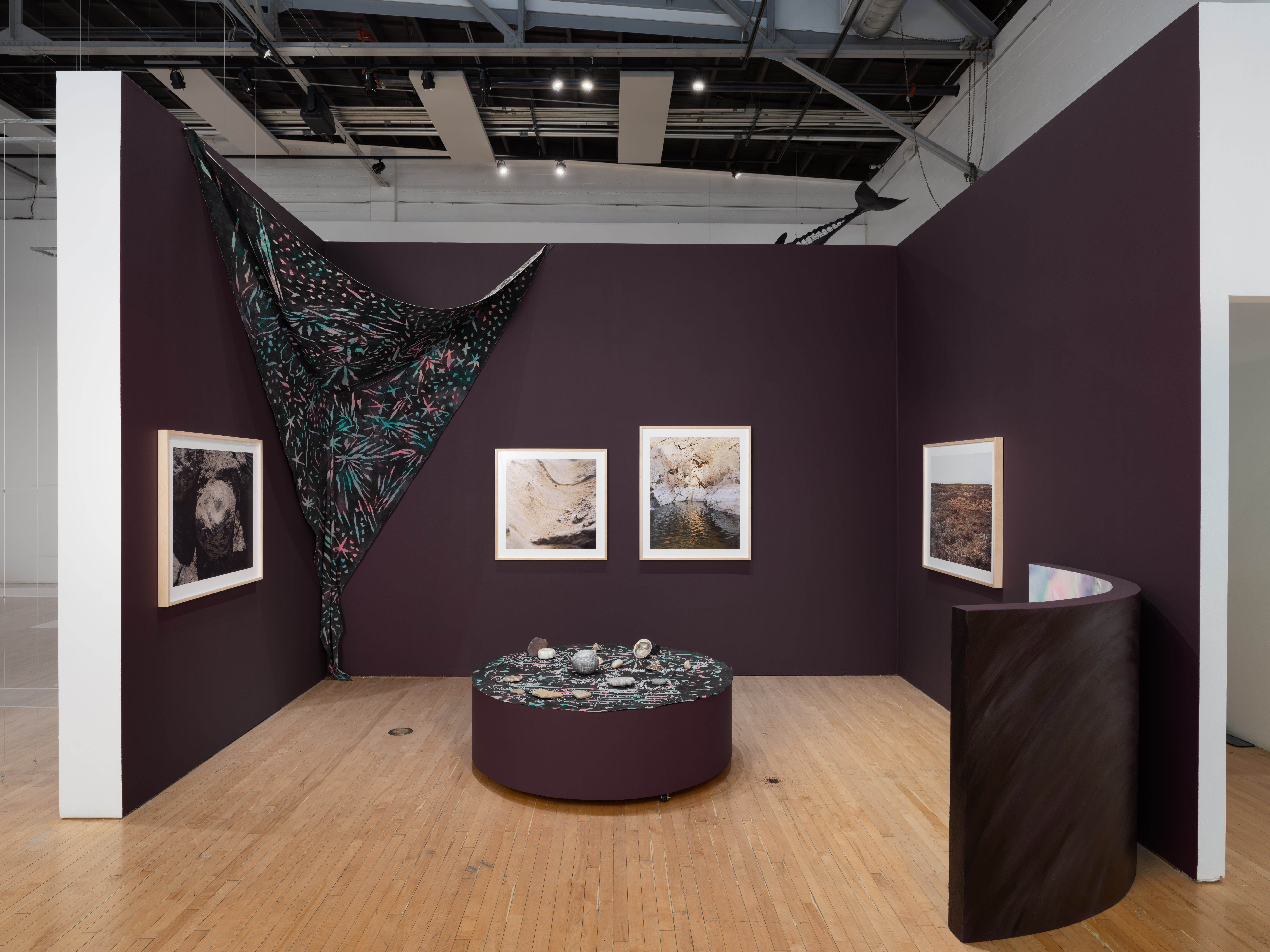
Mercedes Dorame
(left to right)
Steatite Remains–‘Eesey Moyookmoro
(from the series Everywhere is West), 2022
inkjet print
Skyworld Gathering – Navaayoy Shoshyoot, 2024
acrylic paint on canvas
Emerging–Pahiiynok’e
(from the series Everywhere is West), 2022
inkjet print
Submerging–‘Aawmet
(from the series Everywhere is West), 2022
inkjet print
Fox Relatives–Kaweewesh ‘Eyoohiinkem
(from the series Everywhere is West), 2022
inkjet print
Edges of Abalone–‘Ahaavkomen ‘Aapo, 2024
wood, automotive paint, and acrylic paint
They Dance Across the Water–Mwaar’a
Hevuuchok Yakeenax, 2024
plinth with acrylic paint on canvas, cast concrete bowl
and star stones, cast resin, cinnamon, salt and found
stones and shell
All works courtesy of the artist
Mercedes Dorame (Tongva, she/her) considers the land
we occupy through stories of ancient practices and the
contemporary legacies of settler colonialism. Dorame
has created a devotional environment using objects she
gathered on Tongva heritage lands, an installation that
encourages viewers toward a holistic alignment of self,
land, and celestial bodies.
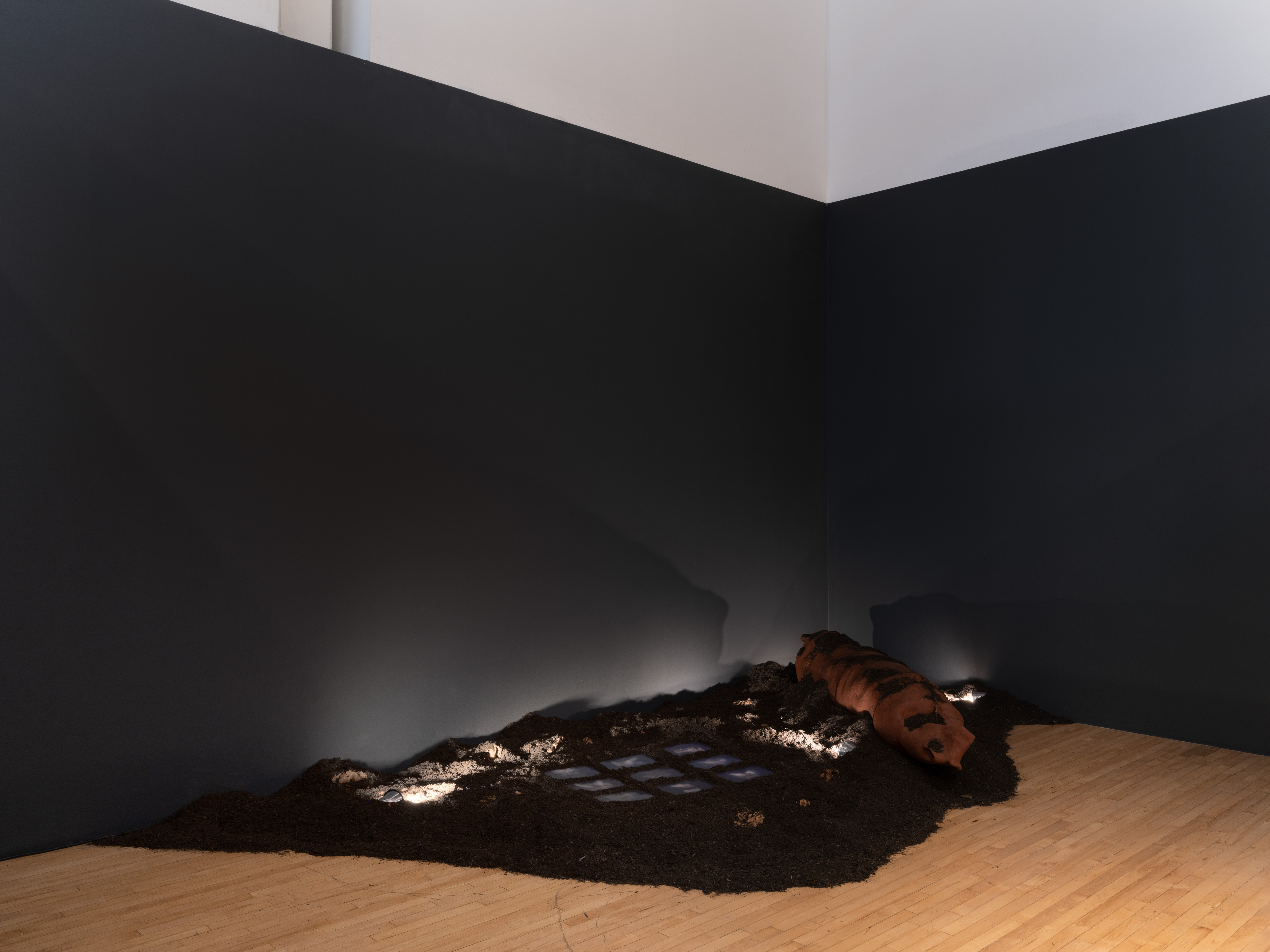
Aroussiak Gabrielian
Future Kin, 2024
Soil, video, sound, ceramics
2:30 min. loop
Courtesy of the artist
In Future Kin, Aroussiak Gabriellian (she/her) connects
a composting ritual to the life cycles of humans, the
biome in our digestive tracts, and the bacterial, fungal,
and animal life that emerges from decomposing organic
matter. Undulating hands gently caress composted
soil, suggesting human engagement, empathy, and
awareness of ecological interconnectedness.
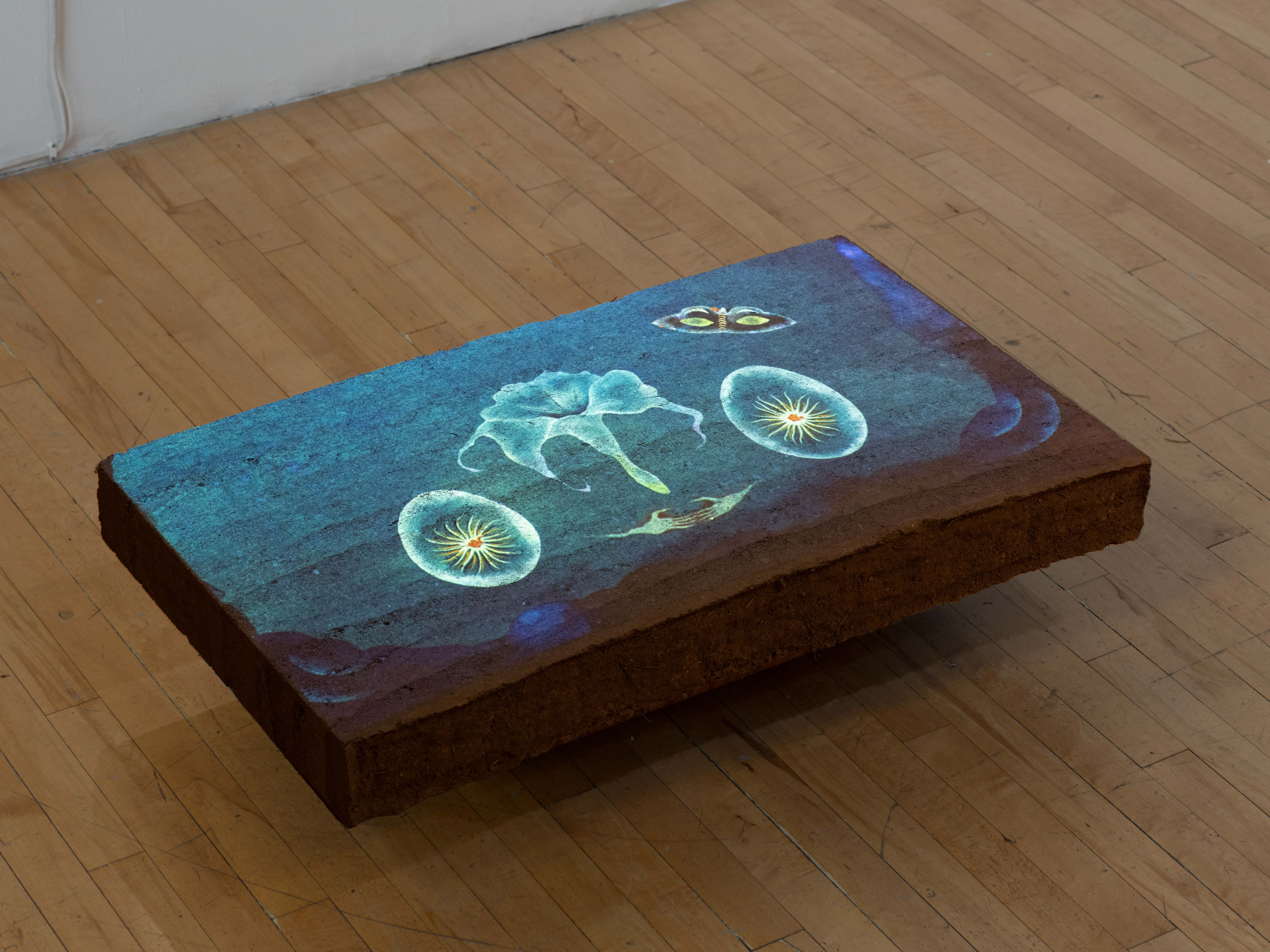
iris yirei hu
mud song dream sequence, 2024
Video and rammed earth
3:14 min.
Animation: Shoop Rozario
Courtesy of the artist
iris yirei hu (she/her) uses diverse media to share her
journeys with all living beings, whom she understands
to be inextricably linked. Her practice is rooted in
“collaborative optimism,” in which trauma can inform
healing, solidarity, creativity, and liberating futures for
folks who are Indigenous, Black, and people of color.
Lez Batz (Sandra de la Loza and Jess Gudiel)
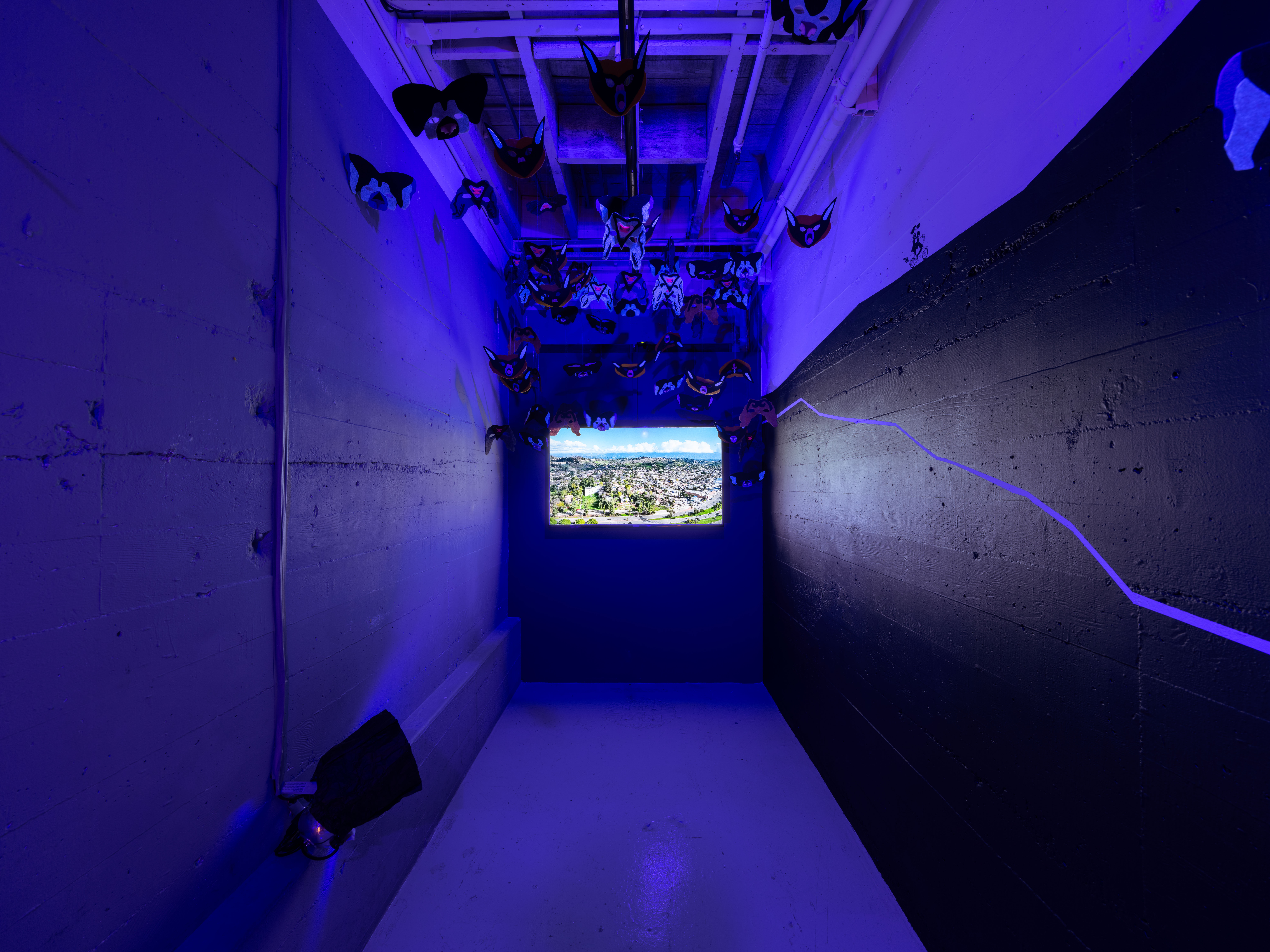
Lez Batz (Sandra de la Loza and Jess Gudiel)
Source, 2023
Mixed-media installation, including seventy felt bat
masks, baleen whale cardboard puppet, graphic mural,
single-channel video
6:33 min.
Courtesy of Lez Batz
Lez Batz acknowledges the natural coinhabitants of
Tongva land (referred to as Los Angeles). The whale
puppet honors the Mixocetus elysius whale skull found
in 1931 in the hills of Northeast Los Angeles, while
the handcrafted bat masks recognize the many bat
communities in this Southern California ecosystem.
Malaqatel ija, Semillas Viajeras, Seed Travels
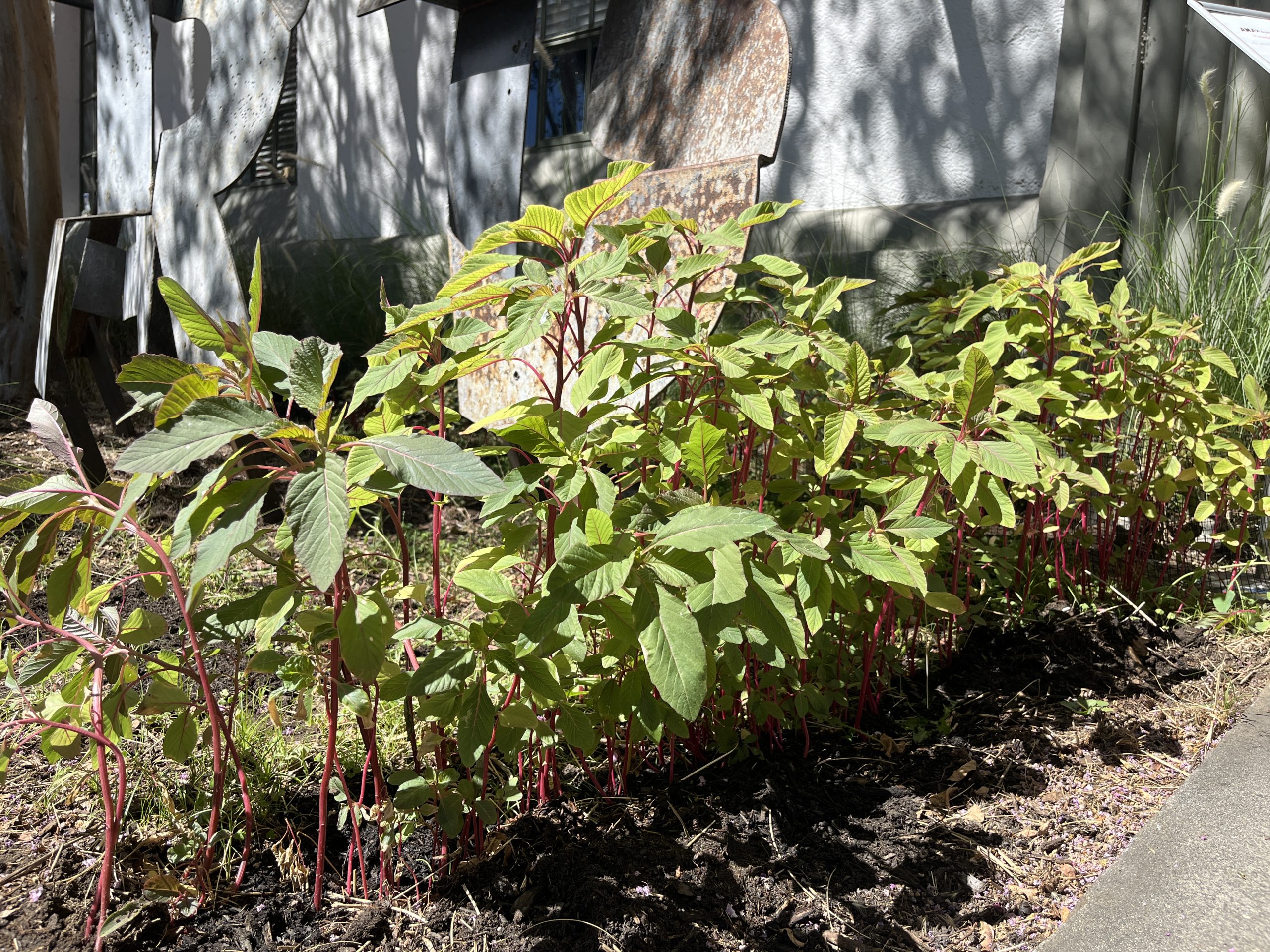
Malaqatel Ija, Semillas Viajeras, Seed Travels
Malaqatel Ija, Semillas Viajeras, Seed Travels,
2014–ongoing
Site-responsive garden in front of the Armory,
community events and collaborations, labor, seeds
Courtesy of the Malaqatel Ija, Semillas Viajeras, Seed
Travels community
Members of Guatemala’s Mayan Achi community have
organized and revitalized ancestral amaranth farming
to promote traditional methods of cultivation and
build community. Amaranth is a cornerstone grain
in Indigenous Guatemalan communities, both for its
sustenance and its spiritual significance, and was
nearly eradicated by Spanish settlers in the sixteenth
century. Kyle Kootswatewa (Hopi, he/him) has created
a seed pot to hold amaranth, known as “komo” in the
Hopi language. This clay vessel is intended for use
at garden gatherings that are part of Malaqatel Ija,
Semillas Viajeras, Seed Travels. They are a gift. Visitors
may add amaranth seeds or take seeds from the pot.
Following this exhibition, the pot along with the seeds
will journey back to Rabinal, Guatemala where more
seeds will be added by farmers in Guatemala. The
seed pot will continue to travel.
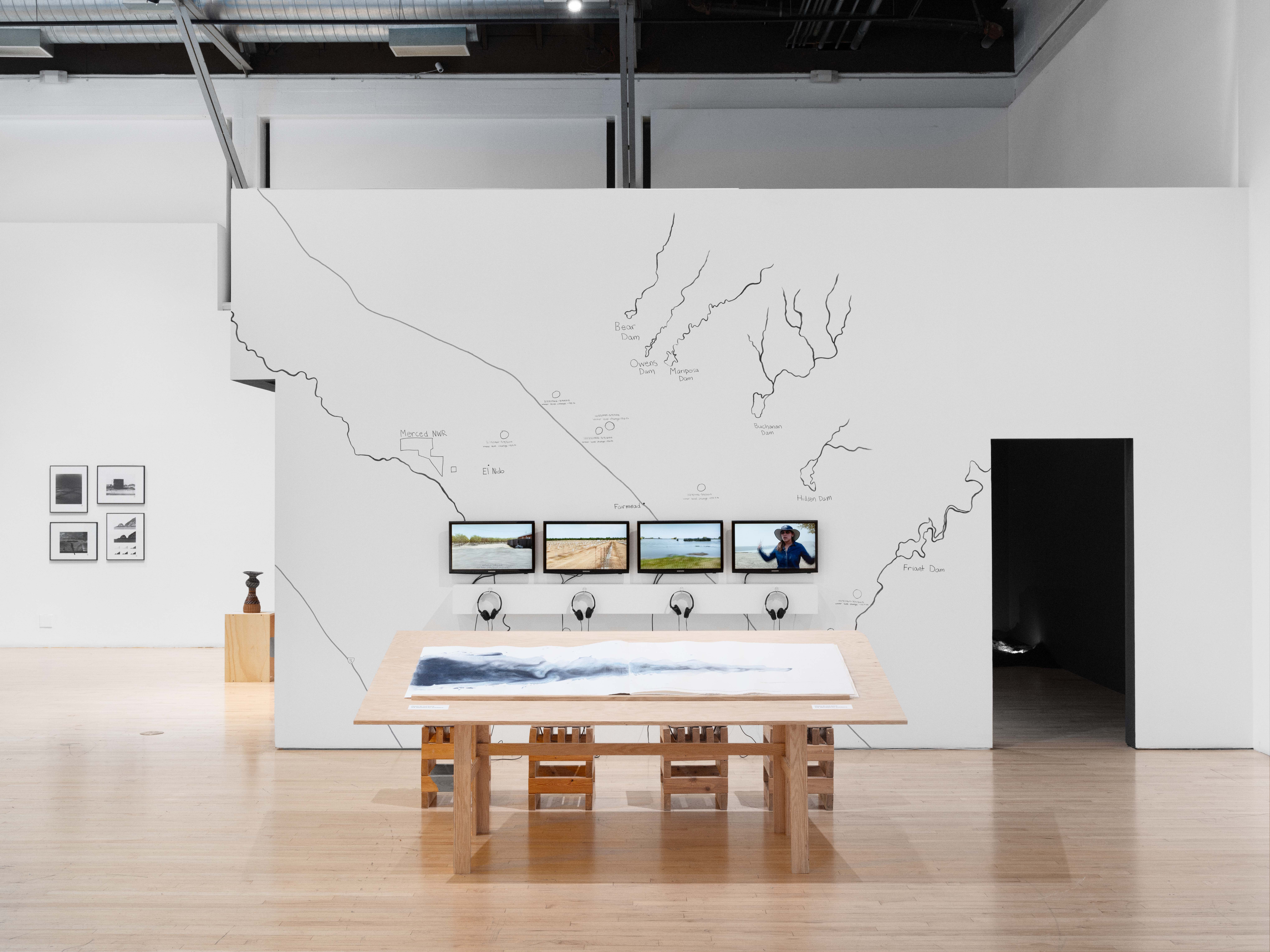
Hillary Mushkin
Groundwater, 2024
Four-channel video installation, wall drawing, sound
10:34 min.
Camera: Hillary Mushkin and Leonardo Pirondi
Sound: Hillary Mushkin and Zazie Ray-Trapido
Editor: Hillary Mushkin
Interviewer: Heather Williams
Exhibition AV: Peter Kirby
The River and the Grid, 2024
Artist’s book: ink, watercolor, graphite, and glue on paper
Both works courtesy of the artist
Video interviews from left to right: 1) Rosa Inguanzo,
2) Vicki Ortiz, 3) Madeline Yancey, 4) Angela Islas.
The audio on the speakers is Olivia Chumacero.
California’s Central Valley is experiencing subsidence, or
sinking ground levels, due to excessive water extraction.
In collaboration with artists, scholars, activists, and
scientists, Hillary Mushkin (she/her) has studied how
this critical farmland area has been shaped by political
and commercial interests, generations of groundwater
pumping, hydrological engineering, and climate change.
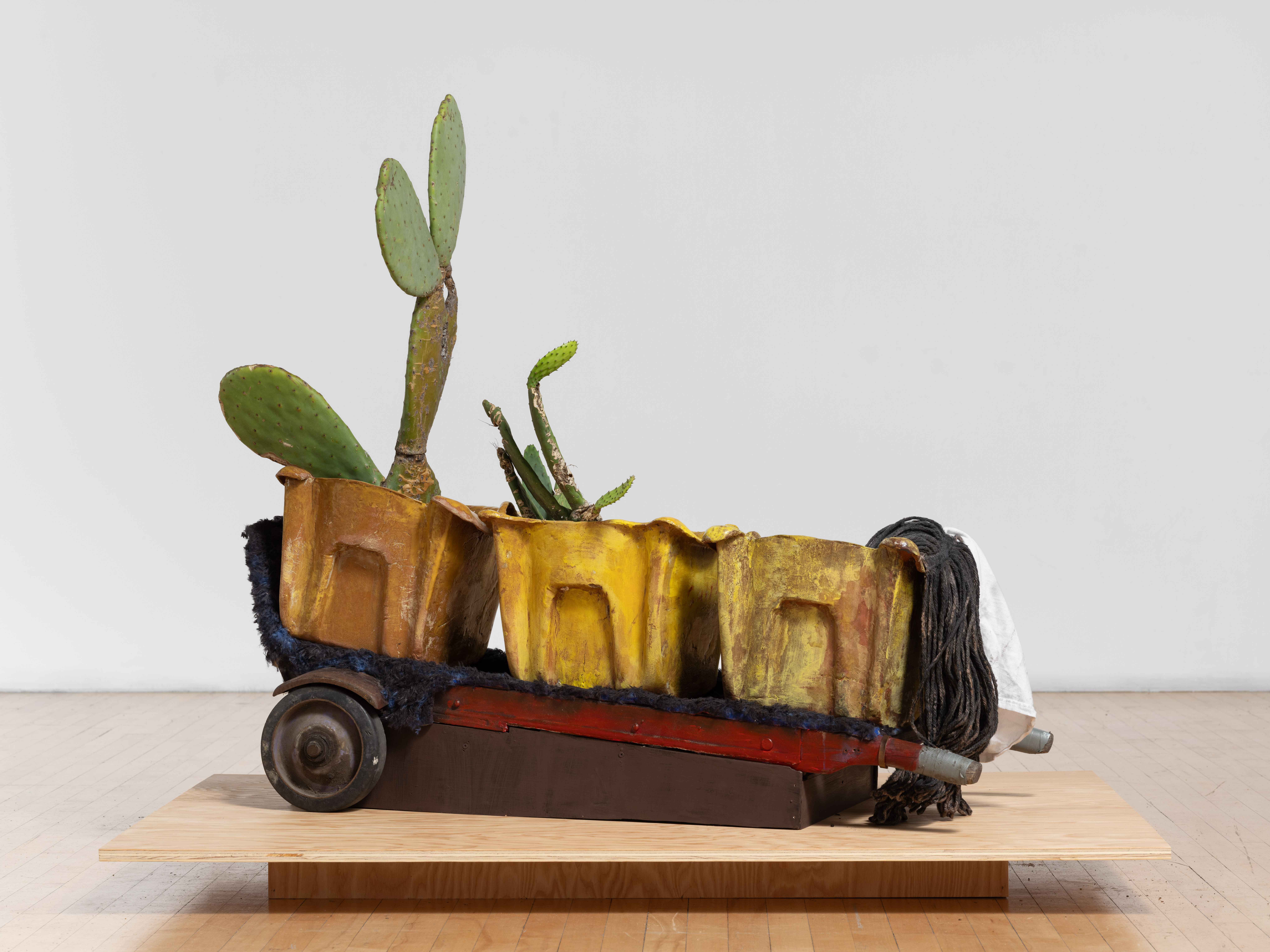
Vick Quezada
N-400 Hustle, 2023
Mixed media, ceramics, prickly pear cactus
Courtesy of the artist
The potted cactus and string of dried limes in N-400
Hustle by Vick Quezada (Mestizx-Latinx, they/them)
reference traditional dietary staples throughout
the Americas, systems of oppression of Latinx and
Indigenous migrants, and the artist’s mestizx culture.
The elements of this sculpture signal hope and
resistance while expressing ingenuity and defiance.
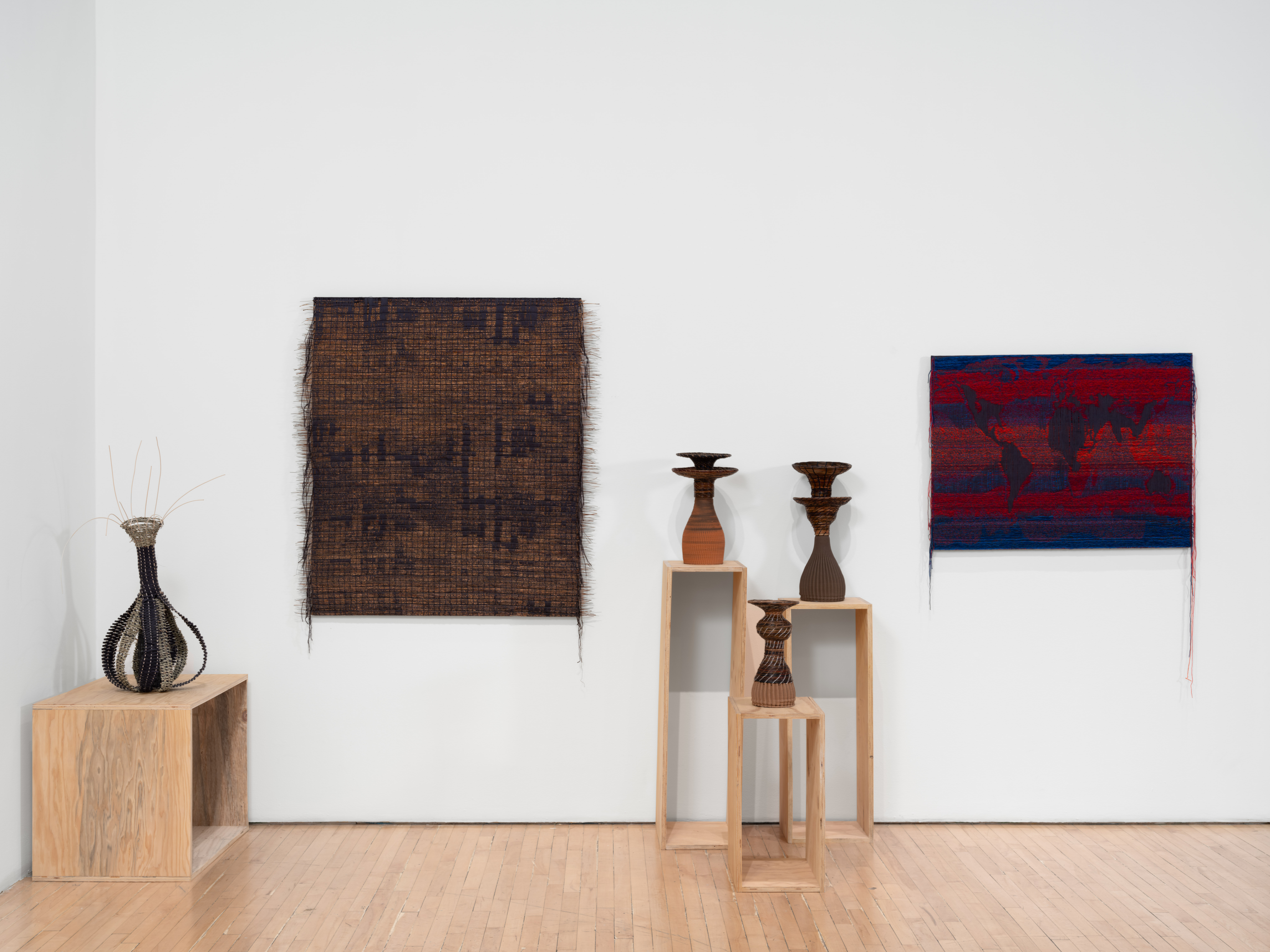
Sarah Rosalena
Woven Pine, 2023
Pine needles, cotton yarn
Terrain, 2023
Hand-dyed cochineal cotton and wool yarn; hand-dyed
indigo cotton, linen, and wool yarn; cotton yarn
Flux, from the series Earth and Pine, 2024
3D printed stoneware, pine needles, waxed thread
Infinite, from the series Earth and Pine, 2024
3D printed stoneware, pine needles, waxed thread
Nexus, from the series Earth and Pine, 2024
3D printed stoneware, pine needles, waxed leather thread
Earth and Pine, from the series Earth and Pine, 2023
3D printed stoneware, pine needles, reed
All works courtesy of the artist
Sarah Rosalena (Wixárika, she/her) frequently uses
machines to create her artwork. In addition to a
handloom, she has created ceramic works using 3D
printer technology, simulating traditional coil pot
construction. In weaving together traditional craft and
cutting-edge technology, Rosalena merges ideas and
knowledge traditions that normally exist in opposition.
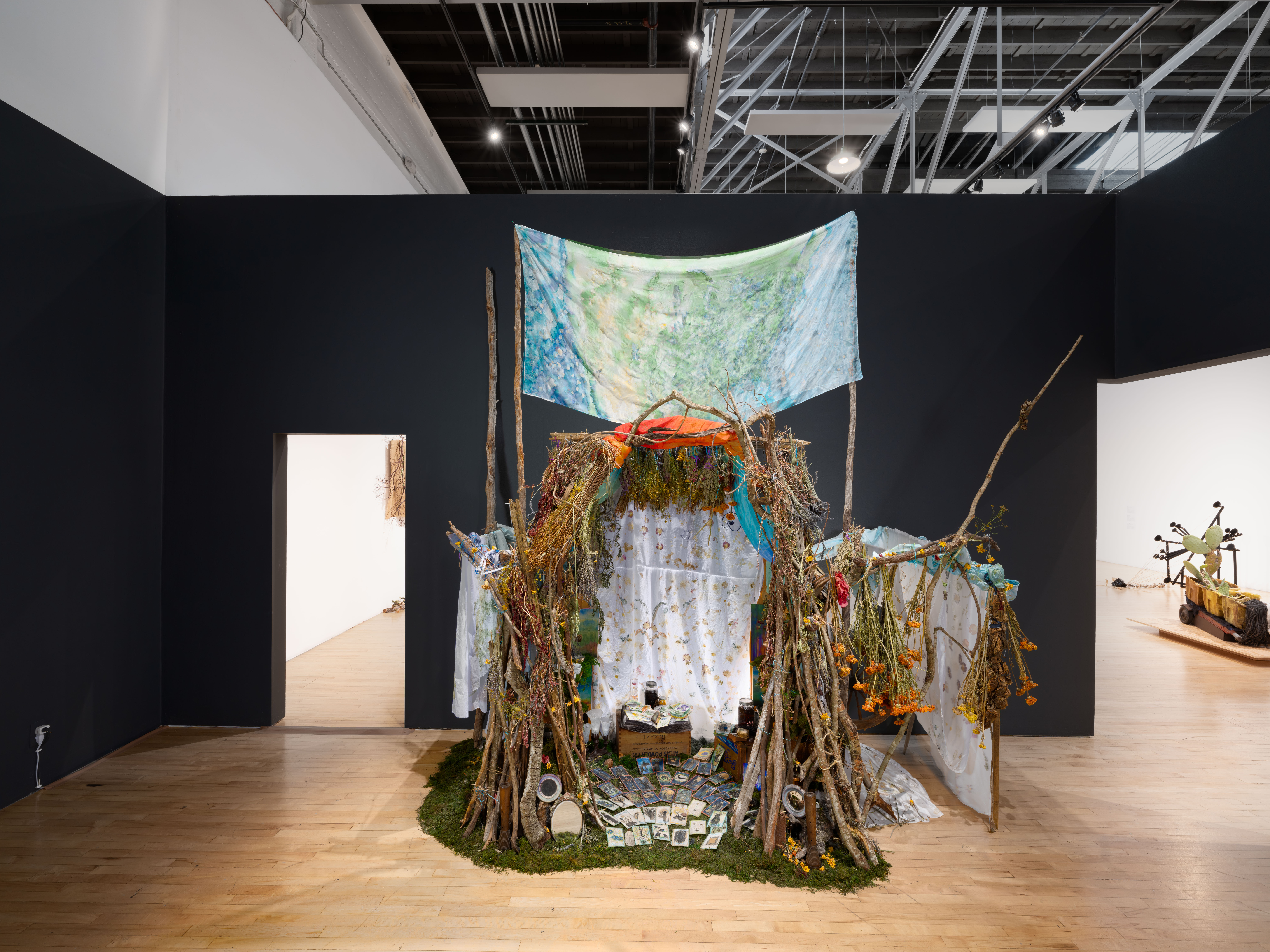
Enid Baxter Ryce
Shed (Mapping the Devil’s Half Acre), 2024
Mixed media, including hand-printed silk, dried plants,
hand-printed cotton, antique tobacco sticks, cherry
wood, cedar wood, glass, botanical inks, papers, crates
Courtesy of the artist
Dried plants such as indigo and woad, handmade
books and maps, tarot cards and runes, and glass jars
of plant-based pigments are among many tools of
early scientific exploration and pre-scientific divination.
Enid Baxter Ryce (she/her) has assembled these
elements of medieval science into a contemporary
witch’s office, adorned with fabrics painted with inks
and dyes made from plants she grew from seed.
Enid Baxter Ryce with Luis Camara
Devil’s Half Acre Tarot, 2024
Hand-processed botanical pigments on paper
Drawings: Enid Baxter Ryce and Luis Camara
Color: Enid Baxter Ryce
Courtesy of the artists
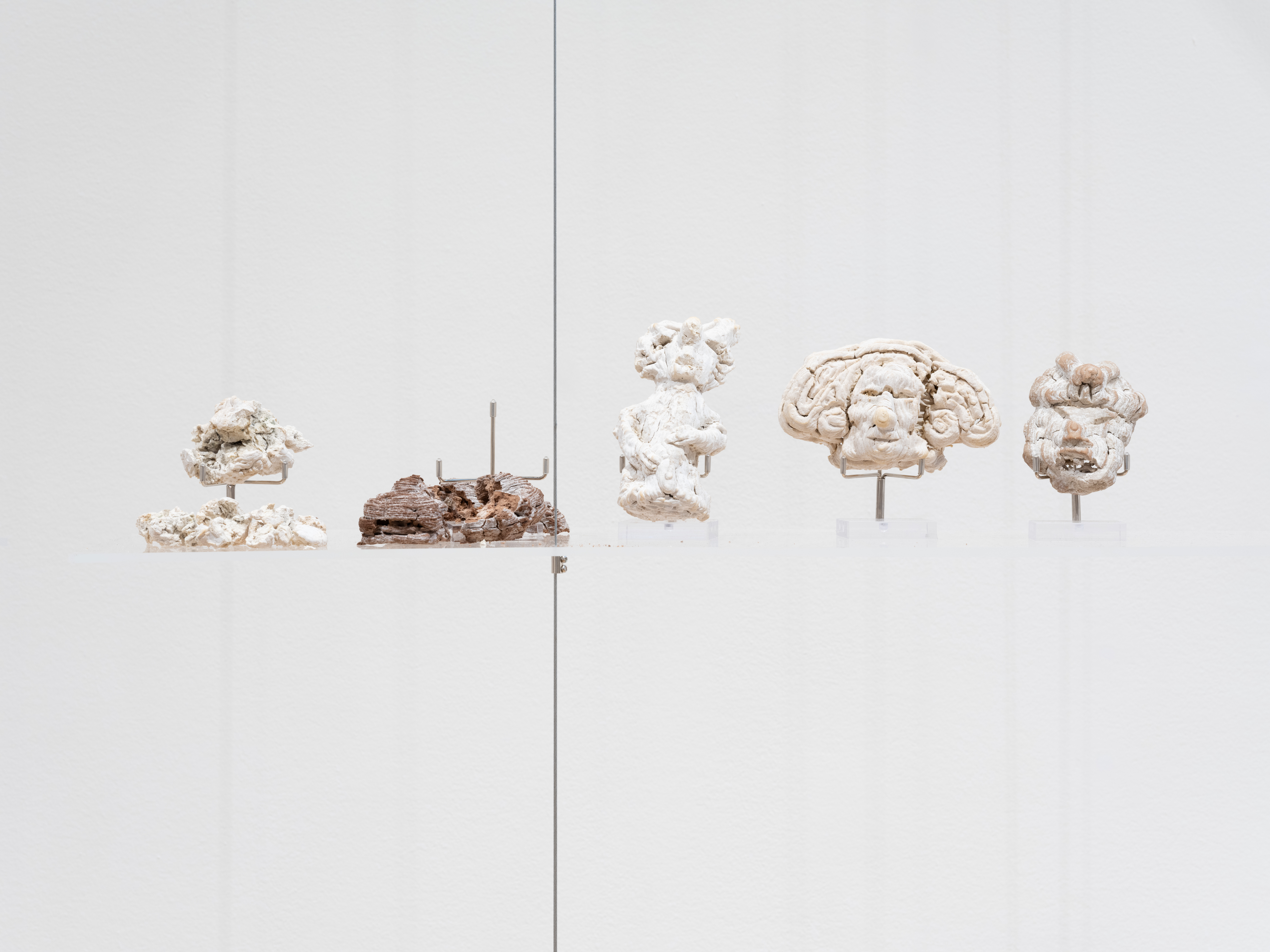
Cielo Saucedo
Visible Vault, 2024
Maseca, plexiglass, wire, foam
Courtesy of the artist
Cielo Saucedo (they/them) uses dehydrated masa
and 3D printing technology to make reproductions of
Mesoamerican artifacts. Saucedo’s printed artifacts,
bones, and organs are purposefully impermanent. Here,
they are presented to resemble a museum’s archival
storage area. The installation draws connections between
ethics of care and circulation of people and information.
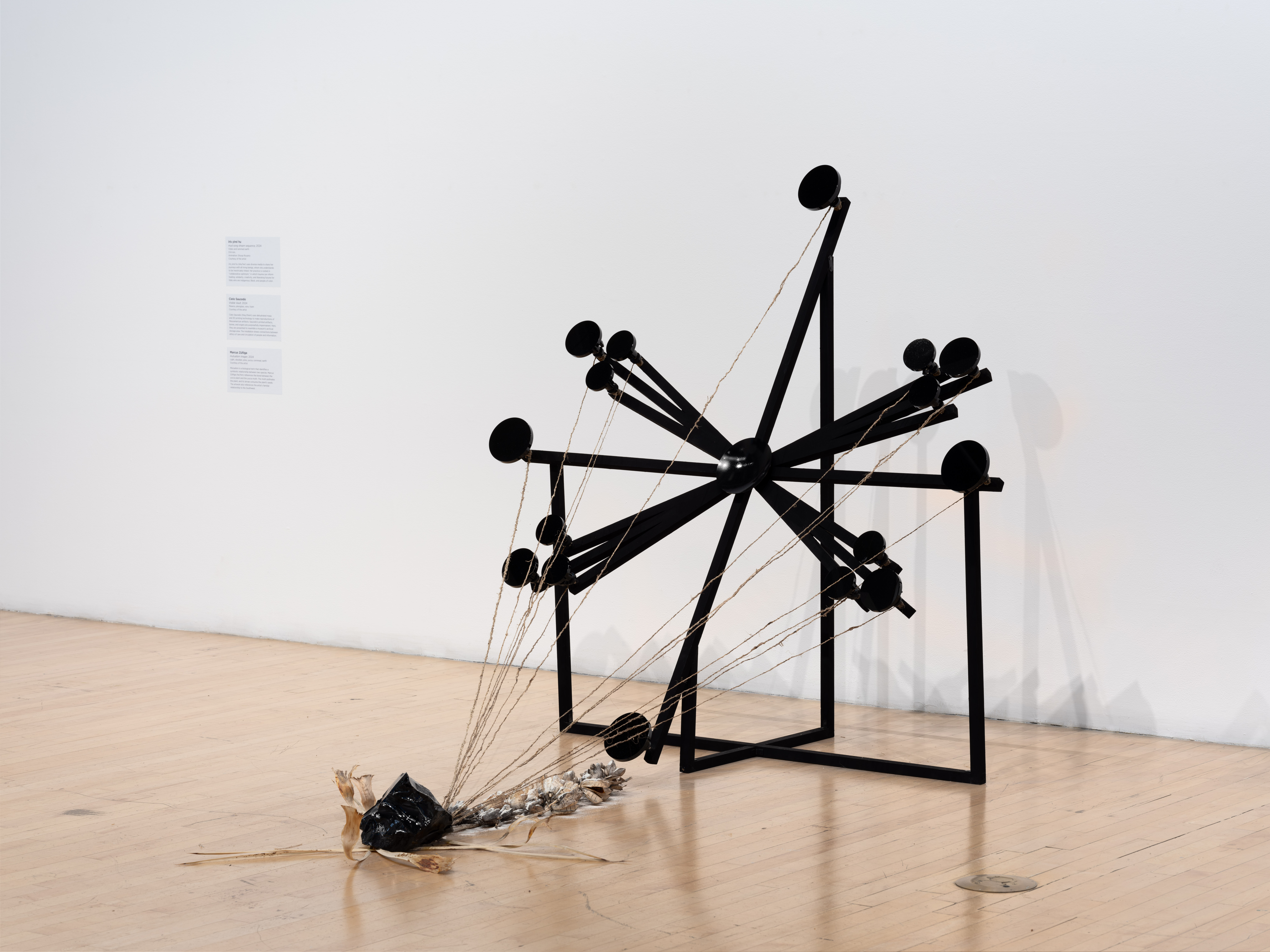
Marcus Zúñiga
mutualism imager, 2024
Light, obsidian, pine, yucca, cornmeal, earth
Courtesy of the artist
Mutualism is a biological term that identifies a
symbiotic relationship between two species. Marcus
Zúñiga (he/him) references the bond between the
yucca plant and the yucca moth. The moth pollinates
the plant, and its larvae consume the plant’s seeds.
The artwork also references the artist’s familial
relationship to the Southwest.
